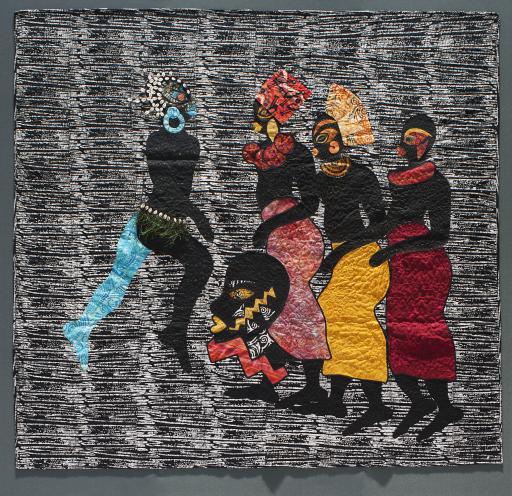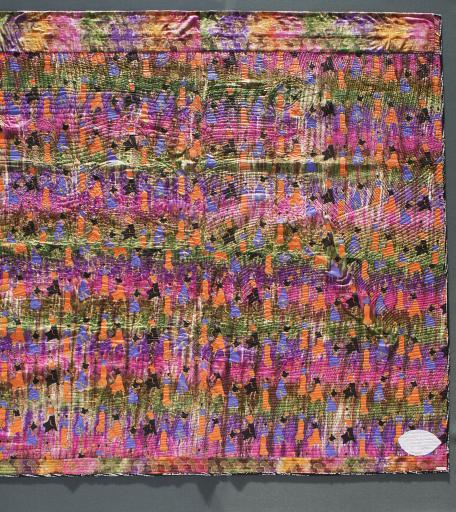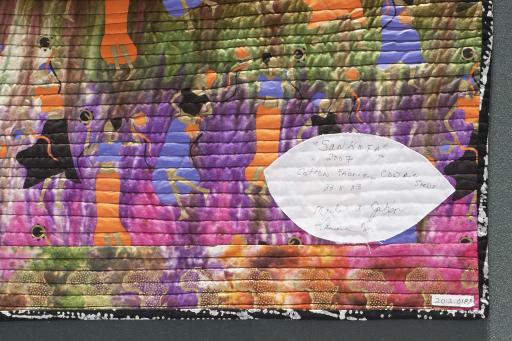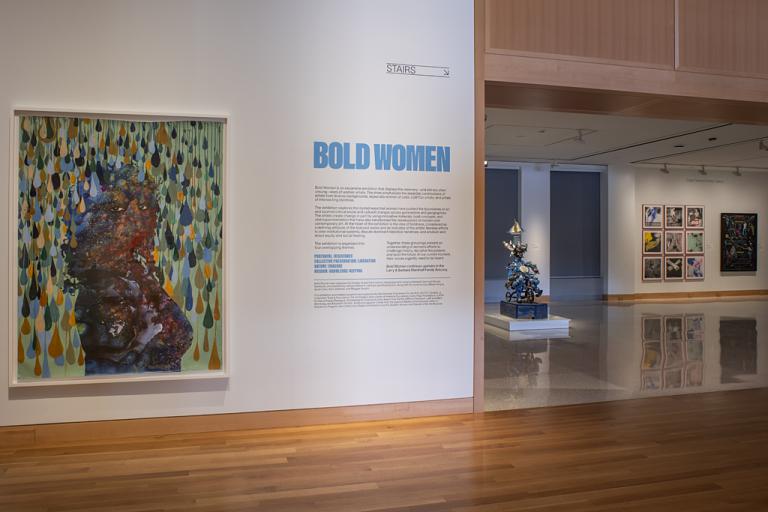Sankofa, Marla A. Jackson
Artwork Overview
Marla A. Jackson, artist
born 1952
Sankofa,
2007
Where object was made: United States
Material/technique: batik fabric; cotton; Austrian crystal; metallic thread; cowry shells; peacock feathers; paint; appliqué
Credit line: Museum purchase: Peter T. Bohan Art Acquisition Fund
Accession number: 2012.0183
Not on display
If you wish to reproduce this image, please submit an image request









